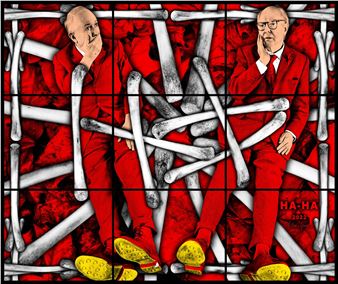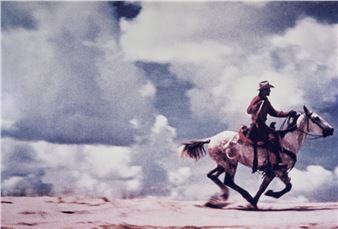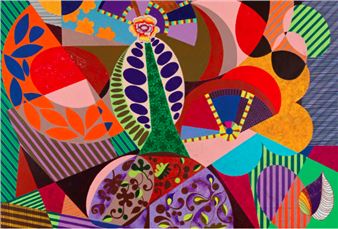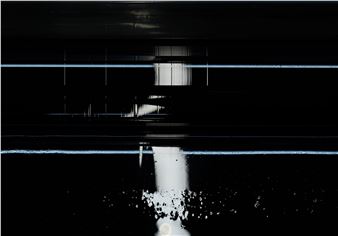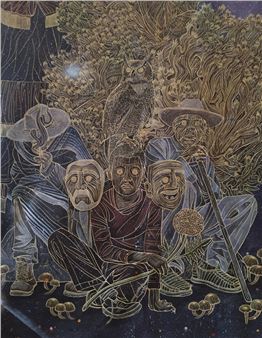Antony Gormley: In Formation
White Cube is pleased to present вҖҳIn FormationвҖҷ by Antony Gormley, an exhibition of new cast iron work that questions to what extent we are the product of our environment, and to what extent we are makers of it.
On the ground floor are four вҖҳStackвҖҷ works: massive, one and a half life-size sculptures built from solid cast iron blocks that each weigh between 11 and 700 kilos. The component parts are loose and use dead weight as a principle of construction; it is the subtle inflection of how one block takes the load from another that suggests the attitudes of repose, lamentation or alertness of the whole. Freshly unearthed from foundry sand, the blocks have the appearance of stone in their organic, silvered surfaces. Evoking the idea of the column, Gormley sees them as вҖҳreverse caryatidsвҖҷ, sculpted figures that served as architectural pillars in the ancient world. Rather than offering reinforcement, however, these вҖҳStacksвҖҷ lean on the walls for support.
If the works on the ground floor reflect our dependency on the built environment, those in the lower gallery investigate the consequences of our ability to manipulate matter. The nine new blockworks, called вҖҳAggregatesвҖҷ, are made up of aggregated blocks that treat matter as information and use the language of code to suggest both struggle and symbiosis between body and block. Each rusted figure appears to extricate itself or to take support from a material mass, referencing MichelangeloвҖҷs famous вҖҳSlavesвҖҷ (1513 вҖ“ 16), where a body is emerging out of the solid block. Here Gormley asks, вҖҳIs the body the product of the block, or the block the product of the body?вҖҷ
Discussing his interest in the transformation that digitalisation has engendered in the way we relate to the world and ourselves, Gormley has spoken of this вҖҳnot as a noble conflict between spirit and matter, but an overturning of fixed principles that gives way to a continual and fluid translation from information into form and from form into informationвҖҷ. Works such as Pack (2019) admit to the ability of our technology to reveal and confound, just as Hold (2019) suggests a tussle between code and iron, where form and medium are so locked together as to be indistinguishable. In making the pixel physical, the вҖҳAggregateвҖҷ works make palpable the ways in which we are now engaged with a new way of being and becoming in the world, what Gormley calls вҖҳa mortal struggle between the immanent and the manifestвҖҷ.
The works in this exhibition are part of GormleyвҖҷs ongoing questioning of the human project in light of our industrial inheritance, our embodied selves at a time of perpetual mutability and the knowledge we now have of our profound effect on the elemental world.
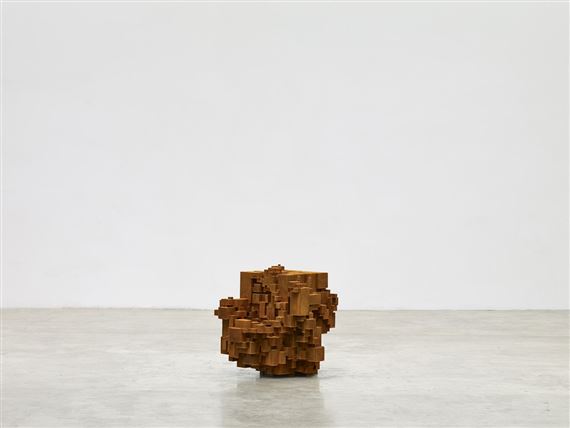
Recommended for you
White Cube is pleased to present вҖҳIn FormationвҖҷ by Antony Gormley, an exhibition of new cast iron work that questions to what extent we are the product of our environment, and to what extent we are makers of it.
On the ground floor are four вҖҳStackвҖҷ works: massive, one and a half life-size sculptures built from solid cast iron blocks that each weigh between 11 and 700 kilos. The component parts are loose and use dead weight as a principle of construction; it is the subtle inflection of how one block takes the load from another that suggests the attitudes of repose, lamentation or alertness of the whole. Freshly unearthed from foundry sand, the blocks have the appearance of stone in their organic, silvered surfaces. Evoking the idea of the column, Gormley sees them as вҖҳreverse caryatidsвҖҷ, sculpted figures that served as architectural pillars in the ancient world. Rather than offering reinforcement, however, these вҖҳStacksвҖҷ lean on the walls for support.
If the works on the ground floor reflect our dependency on the built environment, those in the lower gallery investigate the consequences of our ability to manipulate matter. The nine new blockworks, called вҖҳAggregatesвҖҷ, are made up of aggregated blocks that treat matter as information and use the language of code to suggest both struggle and symbiosis between body and block. Each rusted figure appears to extricate itself or to take support from a material mass, referencing MichelangeloвҖҷs famous вҖҳSlavesвҖҷ (1513 вҖ“ 16), where a body is emerging out of the solid block. Here Gormley asks, вҖҳIs the body the product of the block, or the block the product of the body?вҖҷ
Discussing his interest in the transformation that digitalisation has engendered in the way we relate to the world and ourselves, Gormley has spoken of this вҖҳnot as a noble conflict between spirit and matter, but an overturning of fixed principles that gives way to a continual and fluid translation from information into form and from form into informationвҖҷ. Works such as Pack (2019) admit to the ability of our technology to reveal and confound, just as Hold (2019) suggests a tussle between code and iron, where form and medium are so locked together as to be indistinguishable. In making the pixel physical, the вҖҳAggregateвҖҷ works make palpable the ways in which we are now engaged with a new way of being and becoming in the world, what Gormley calls вҖҳa mortal struggle between the immanent and the manifestвҖҷ.
The works in this exhibition are part of GormleyвҖҷs ongoing questioning of the human project in light of our industrial inheritance, our embodied selves at a time of perpetual mutability and the knowledge we now have of our profound effect on the elemental world.
Artists on show
Related articles
We look ahead to London's art and exhibition openings in November and December 2019 and select the must-see shows to round out the year.
McQueen puts BritainвҖҷs next generation on billboards, droids take over Dundee, and the National Gallery goes inside the mind of Da Vinci вҖ“ all in your weekly dispatch.
Welcome to our pick of the best London exhibitions to see right now вҖ” get your winter dose of culture.

 ARTISTS
ARTISTS










